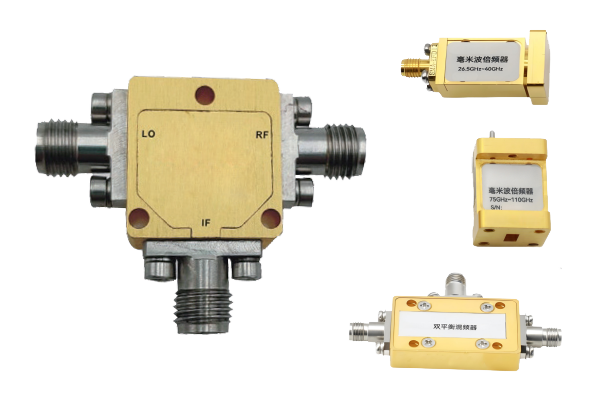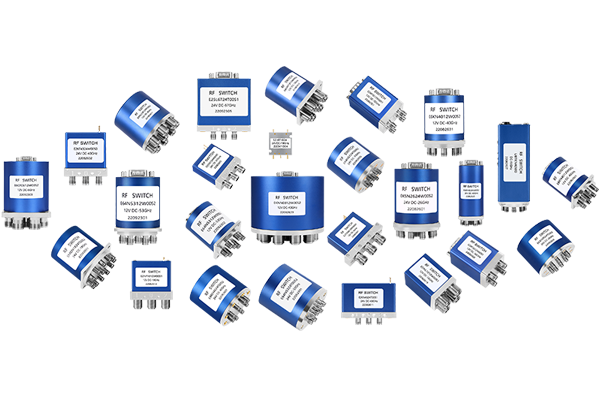
Pin diodes are widely recognized as vital components in RF systems because of their intrinsic functional attributes Their quick conductive to nonconductive switching and compact capacitance with limited insertion loss make them perfect for switches modulators and attenuators. The fundamental operating principle of PIN diode switching rests on adjusting current flow with a control bias. A change in bias voltage transforms the depletion-region width of the p–n junction, affecting conductance. By varying the bias level PIN diodes can be reliably switched to operate at high frequencies with low distortion
Where timing precision and control matters PIN diodes get implemented into high-level circuit systems They may be applied in RF filtering arrangements to selectively pass or reject particular frequency bands. Their high-power endurance makes them appropriate for amplifier power dividing and signal generation functions. The development of compact efficient PIN diodes has increased their deployment in wireless communication and radar systems
Coaxial Switch Design and Performance Analysis
Engineering coaxial switches requires meticulous handling of diverse design variables The operation of a coaxial switch is affected by the selected switch topology frequency band and insertion loss behavior. Designs should focus on cutting insertion loss and increasing isolation to improve switch performance
Performance analysis requires evaluating key metrics such as return loss insertion loss and isolation. Metrics are assessed using simulation tools theoretical modeling and laboratory measurements. Careful and accurate evaluation is vital to certify coaxial switch reliability in systems
- Coaxial switch analysis typically employs simulation tools, analytical techniques and experimental procedures
- Coaxial switch behavior is sensitive to temperature, impedance mismatch and assembly tolerances
- Contemporary advances and emerging developments in coaxial switch engineering seek improved metrics with smaller size and reduced power
Optimizing Low Noise Amplifier Architectures
Refining the LNA for better performance efficiency and gain underpins superior signal fidelity in systems This calls for deliberate active device selection bias strategies and topological design choices. A strong LNA design reduces noise contribution and boosts signal amplification with minimal distortion. Simulation based analysis is critical to understand design impacts on LNA noise performance. Lowering the Noise Figure is the aim, indicating enhanced preservation of input signal over generated noise
- Choosing active devices with low noise profiles is a key requirement
- Establishing proper bias conditions with optimal settings minimizes noise within transistors
- Circuit topology choices are decisive for the resulting noise performance
Techniques like impedance matching noise cancellation and feedback control can further elevate LNA performance
Signal Switching Using Pin Diodes

Pin diode based switches enable adaptable and effective RF signal routing in various use cases The semiconducting switches operate at high speed to provide dynamic control over signal paths. Their minimal insertion loss and robust isolation characteristics prevent significant signal degradation. They find use in antenna selection systems duplexers and phased array antennas
The switching behavior is governed by voltage driven modulation of the diode’s resistance. When off or deactivated the diode exhibits high resistance effectively blocking RF energy. A controlled forward voltage lowers resistance and enables unimpeded RF signal flow
- Moreover PIN diode switches combine quick transitions low consumption and compact form factors
PIN diode switch networks can be configured in multiple architectures and designs to support complex routing tasks. By interconnecting multiple switches designers can build dynamic switching matrices for flexible path configuration
Coaxial Microwave Switch Testing and Evaluation

Testing and assessment of coaxial microwave switches are crucial to ensure efficient operation within systems. Various performance drivers like insertion reflection transmission loss isolation switching speed and bandwidth influence switch behavior. Complete assessment involves quantifying parameters over diverse operational and environmental test conditions
- Additionally furthermore moreover the assessment must address reliability robustness durability and tolerance to severe environments
- The end result of a solid evaluation produces essential valuable and critical data to support selection design and improvement of switches for defined applications
Comprehensive Survey on Minimizing LNA Noise
Low noise amplifier circuits are essential components in many wireless radio frequency and RF communication systems because they amplify weak signals while limiting added noise. This review article offers an in-depth examination analysis and overview of LNA noise reduction approaches. We investigate explore and discuss critical noise mechanisms like thermal shot and flicker noise. We further analyze noise matching feedback topologies and bias optimization strategies to suppress noise. The article highlights recent advances such as novel semiconductor materials and innovative circuit architectures that reduce noise figure. By giving a clear understanding of noise reduction principles and practices this article aims to assist researchers and engineers in developing high performance RF systems
Applications of PIN Diodes for Fast Switching

PIN diodes’ unique remarkable and exceptional behavior makes them appropriate for fast switching systems Low capacitance and low resistance contribute to very fast switching enabling precise timing control in demanding applications. Further PIN diodes’ proportional response to voltage facilitates exact amplitude modulation and switching control. Their adaptable flexible and versatile nature makes them suitable applicable and appropriate for broad high speed applications Examples include optical communications microwave circuits and signal processing devices equipment and hardware
Integrated Circuit Coaxial Switch Circuit Switching Technology
IC coaxial switch technology represents a major step forward in signal routing processing and handling for electronic systems circuits and devices. These ICs control manage and direct coaxial signal flow providing high frequency capability with low latency propagation and insertion timing. IC miniaturization enables compact efficient reliable and robust designs ideal for dense interfacing integration and connectivity needs
- Through careful meticulous and rigorous implementation of these approaches engineers can achieve LNAs with exceptional noise performance supporting sensitive reliable systems Through careful meticulous and rigorous implementation of these approaches engineers can achieve LNAs with exceptional noise performance supporting sensitive reliable systems With careful meticulous and rigorous deployment of these approaches developers can accomplish LNAs with outstanding noise performance enabling trustworthy sensitive electronics By low-noise amplifier rigorously meticulously and carefully implementing these techniques practitioners can achieve LNAs with remarkable noise performance for sensitive reliable electronics
- Applications range across telecommunications data communications and wireless networking
- Aerospace defense and industrial automation benefit from integrated coaxial switch solutions
- Consumer electronics audio video equipment and test measurement instruments utilize IC coaxial switching
Design Considerations for LNAs at mmWave Frequencies

At mmWave frequencies LNAs must contend with greater signal attenuation and intensified influence from noise sources. Parasitic capacitance and inductance play a dominant role at mmWave and necessitate precise layout and component choices. Reducing input mismatch and boosting power gain are critical essential and important for LNA functionality at mmWave. Selecting the right active devices including HEMTs GaAs MESFETs and InP HBTs helps secure low noise figures at mmWave. Additionally the development implementation and optimization of matching networks plays a vital role in efficient power transfer and impedance matching. Careful management of package parasitics is necessary to prevent degradation of mmWave LNA performance. The use of low-loss lines and careful ground plane planning is essential necessary and important to limit reflections and sustain bandwidth
Characterize and Model PIN Diodes for RF Switching Applications
PIN diodes are critical components elements and parts in many RF switching applications systems and contexts. Exact detailed and accurate characterization of these devices is essential for the design development and optimization of reliable high performance circuits. That entails analyzing evaluating and examining electrical voltage and current characteristics such as resistance impedance and conductance. Characterization also covers frequency response bandwidth tuning capabilities and switching speed latency or response time
Furthermore developing precise models simulations and representations for PIN diodes is crucial essential and vital to forecast performance in complex RF systems. A range of modeling approaches including lumped element distributed element and SPICE models are used. Choosing the proper model relies on the specific application requirements and the desired required expected accuracy
State of the Art Techniques for Low Noise Amplifier Design
LNA engineering calls for careful topology and component selection to meet stringent noise performance goals. New and emerging semiconductor advances have led to innovative groundbreaking sophisticated design techniques that lower noise substantially.
Representative methods consist of using implementing and utilizing wideband matching networks selecting low-noise transistors with high intrinsic gain and optimizing biasing schemes strategies or approaches. Moreover additionally furthermore sophisticated packaging and thermal control solutions significantly help reduce noise contributions from outside sources. By carefully meticulously and rigorously applying these approaches designers can realize LNAs with outstanding noise performance enabling sensitive reliable electronic systems
